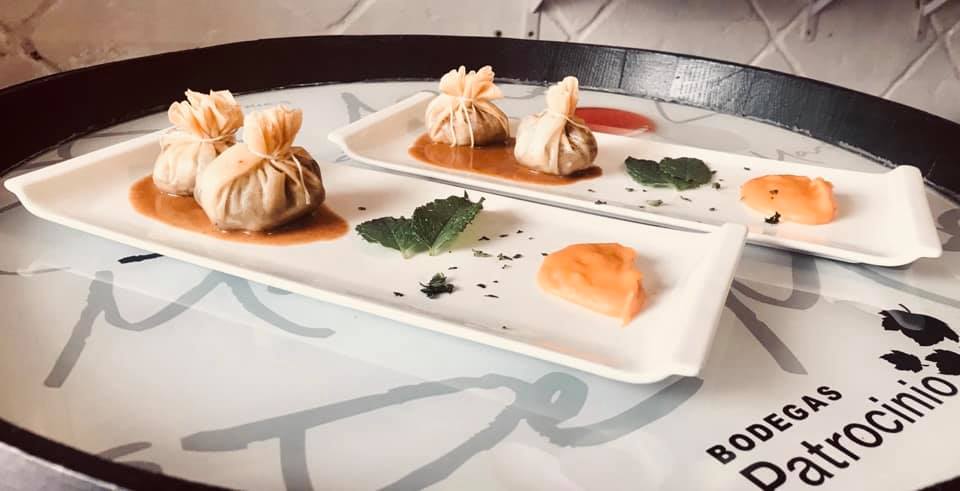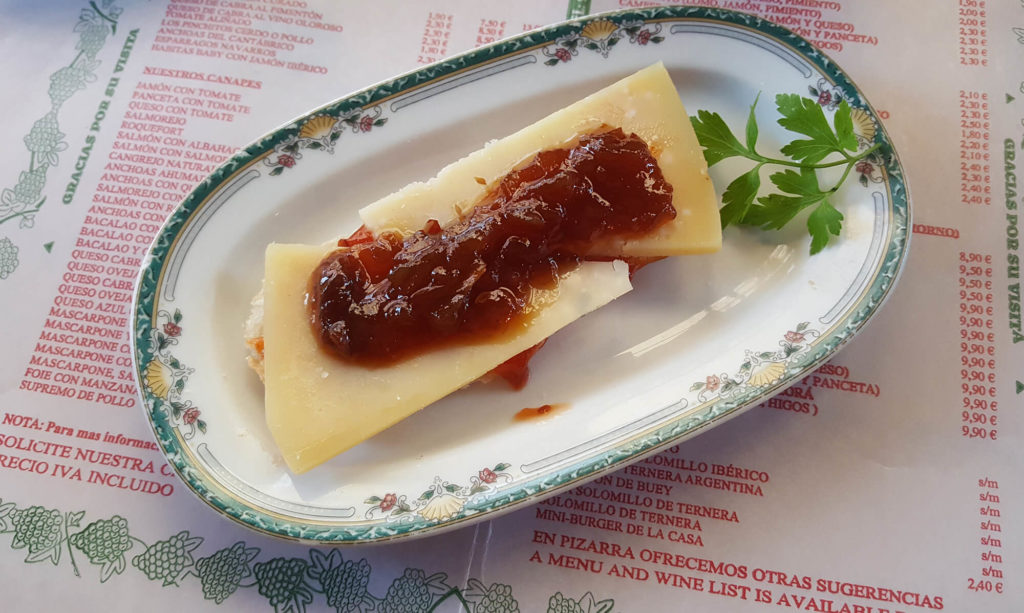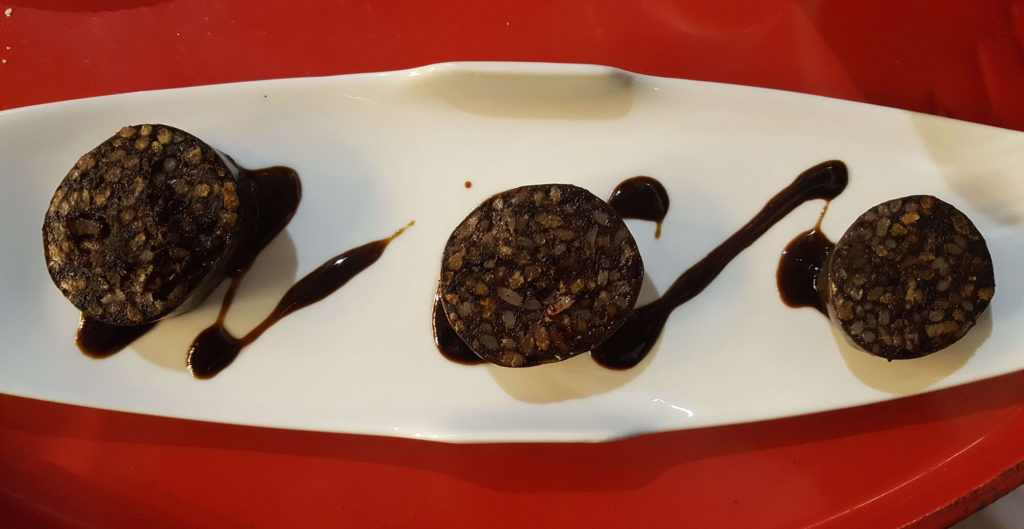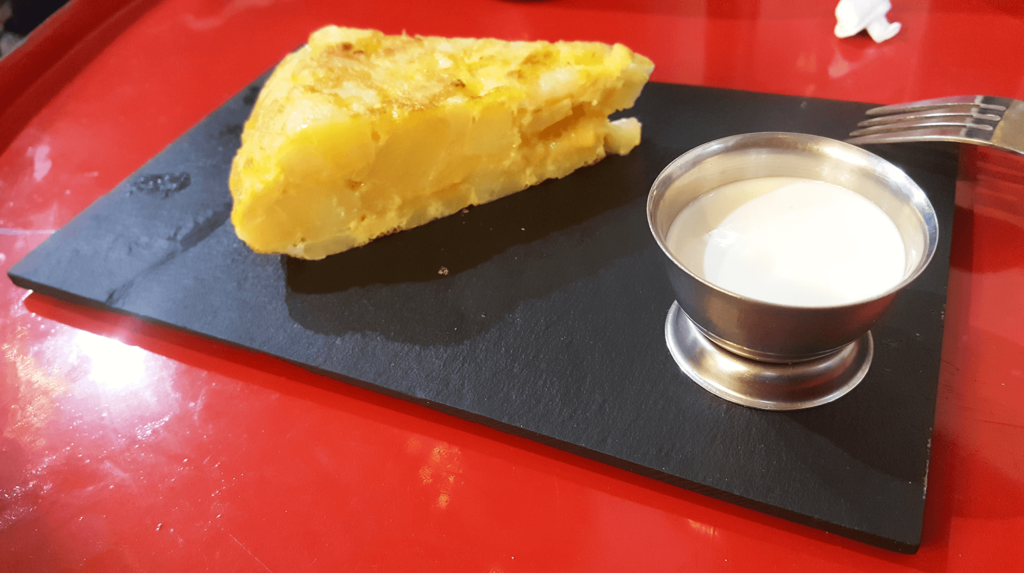Tapas are small Spanish appetizers known in almost every corner of the Earth. They’re tasty, quick, cheap and according to many Spanish people, they’re not just a type of food. They’re a tradition and part of the lifestyle! Read what real Spanish people think about tapas dishes. What is tapas and how would you describe it?

Spanish tapas doesn’t have to be old-school -Tunna Martini, Barrica restaurant
This is no Wikipedia and no copy & paste, guys. While I live in Spain and have plenty of lovely Spanish people around me, the decision to turn this article into an interview was very quick.
It started like a guest post for my copywriter ‘alma mater‘ page called gastroslovnik.sk. I spent years writing for this foodie website so it was natural to come back with a Spanish tapas article. Especially when I eat it on a weekly basis.
I gave my five friends and colleagues five questions about their traditional Spanish appetizers. Obviously, each of them gave me a slightly different answer. Some of my friends see the tradition of tapas as a form of socialising, other ones see it as a form of culinary art.
Opinions vary according to the region they’re from, as well as their gender. Also, four of my friends are carnivores but I was lucky enough to bump into a Spanish vegetarian!
This is what my friends who come directly from Spain think about their traditional Spanish dishes. (I bet you won’t find these answers anywhere else but here and the wonderful gastroslovnik.sk.)
TABLE OF CONTENTS:
List of Contents:
What is Tapas and How Would You Describe the Tradition of Tapas?
Elena (Content Specialist, San Martín del Tesorillo, Andalusia):
Tapas are one of the main characteristics of Spanish cuisine. We call ‘tapa’ a small amount of food that is served in bars to accompany a drink. In Spain it is very common to go for tapas (‘ir de tapas’): a tradition that consists of going from bar to bar with friends to eat and drink.
Fernando (Web Analytic Specialist BI , Sevilla, Andalusia):
What is tapas? Well, tapas is a culinary art of enjoying quick and delicious variety of traditional Spanish dishes. When someone thinks about tapas, it brings to his mind the possibility of selecting between a large range of motherly recipes.
These are usually cooked with certificate of origin of Spanish ingredients like virgin extra olive oil or Iberian pork
Clara (Technical Architect, Castilla y León):
I would say that tapas are the best way to socialize while you enjoy nice food. The best thing about tapas is that you are able to meet your family and friends and just hang around in so many different places.
Alejandro (SEO Developer, Madrid, Provincia de Madrid):
It’s not a very easy world for a vegetarian like me. Having said that, I really like it as a gastronomic concept. Luckily, times are changing for the Spanish cuisine too, and I can find some tapas I can eat too instead of just watching my friends enjoying their food while I drink my beer.
Jesus (Graphic designer, La Linea de la Concepción, Andalusia):
I’d say tapas tradition is good for everyone, because it’s a cheap and affordable way to try different kinds of food for a reasonable price (even though some tapas bars inflate prices a bit too much). That’s what I’d answer to a question ‘what is tapas’: a great tradition of small and cheap food!
There Are a Few Theories about The Origins of Tapas. Which Story is Your Favourite?
Elena: It is said that in the Middle Age a lid (tapa in Spanish) was placed on top of the jar/glass in order to protect the beer or wine from flies and other insects. Waiters would then put something on the lid, for example some cheese or serrano ham.
King Alfonso X (the Wise) saw this when visiting a tavern and liked it so much that he ordered no wine should be served without some kind of food.
Fernando told me to google them. Bad, bad boy.
Clara: I think I was told one story which started in Madrid. There were so many flies in the city because of the lack of hygiene so the people of Madrid started to put the plate they were eating from on the top of their drinks in order to chase away the flies. So the translation of tapa could be the action of cover the glass.
Alejandro: I only know one! The one that claims the tapas tradition was originated in Jerez de la Frontera in south Spain. They used small plates to cover wine cups protecting them from flying insects. It makes all the sense because the word tapa actually means “cover” in Spanish. Also, flies love wine, so that makes two points for the Cover Theory.
Jesus: My favourite origin story of the tapas is the one about a king (either Fernando the VII or Alfonso the XII ) who walks in a humble tavern in Cadiz, ordering wine. There were too many flies in the tavern and the owner didn’t want his majesty’s wine to have flies swimming in it, so he put a slice of ham on top of the cup (tapas literal translation means “lids”).
The king loved it and he ordered another wine with tapa (lid), later becoming more and more trendy among the people. This story is probably fiction but I really like it.
Why is Tapas so Popular in Spain?
Elena: Tapas give you the chance to have a quick bite anytime you like, without the “ceremony” of a restaurant. It is informal and cheap and you can try many different dishes. On the top of that, it’s fun to share tapas over a nice conversation with friends.
Fernando: Because it gives the bar guest the chance to try diversity of local/regional cuisine. For example, the Valencian coast gives us the chance to select between a different versions of cooking paella, Galicia provides us tasty shellfish and Extremadura has great Iberican pork dishes.
Clara: I think tapas are is popular because it’s something you can do everywhere in Spain, and is never the same. The tapas dishes you can get in San Sebastian are so different from those ones which are served in Sevilla… But the essence of this tradition is the same.
Alejandro: How could it be unpopular? You get a free dish of delicious food with your drink. At least that was the beginning idea of tapas. I think the best thing about tapas is the gastronomic variety and how the cooks need to constantly develop new recipes.
Jesus: Because it’s a cheap way of tasting many different recipes.
Does Tapas Have any Rules?

Modern Spanish tapas – Oxtail Dim Sum, Barrica restaurant, Andalusia
Elena: The only rule is to enjoy! You can eat anything as tapa.
Fernando: Great flavour is the unique rule to cook a proper Spanish tapas.
Tapas is the previous step to order a half or full portion of a dish. Once the palate sends its impression to brain, finger starts calling the waiter to order a bigger portion.
Clara: No rules on this concept! Maybe only one… It has to be something eatable in a bite or two. Because if it’s bigger then it already becomes a dish. Then you wouldn’t be able to go to eat in more places because you could get full quite soon. I guess the only rule is to keep it yummy and tiny so you can try as much as you can before feeling full!
Alejandro: It really depends on the area of the country you live. I live in Madrid and the original tradition where you get a free dish of food with a paid drink is outdated now, although we keep calling Tapa to a regular dish you pay for.
Granada, in Andalusia, is all the way around. You literally can have an awesome dinner paying just for 2 or 3 glasses of wine. Another original rule at the beginning was a tapa should be eaten at once, something the customer could grab with a tiny fork or even a hand, but again, if you have the chance to visit Granada you will see some main dishes as a tapa.
Jesus: Tapas do not have rules. However, the ways you get them and the amount of food varies from a city or a bar (Granada being the best deal overall: Whenever you order a drink, they give you a tapa).
What is Your Favourite Tapas Dish?
Elena: I don’t really have only one favourite tapas dish. It really depends on the tapas bar – for each spot I like, I can name at least one tapa that I love! But I normally try the “ensaladilla rusa” everywhere I go because I strongly believe that you can measure the quality of a tapas bar on the quality of its ensaladilla.
Fernando: Depending on the “taperia” and the menu offered, cooking way can be different to other place. It is hard to decide which tapas is the best, but since my experience living abroad and missing my motherland cuisine, I really missed ‘chocos fritos’ (fried cuttlefish), pork hands with chickpeas; fried potatoes (patas bravas) and pepper omelette bite (tortilla).
Alejandro: Tosta de Queso Idiazabal Con Miel, meaning, Idiazabal smoked cheese with honey over a piece of bread.
Clara: Only one? OMG it is difficult to pick. We have in my town a gorgeous croqueta with jamón ibérico. So I guess it’s this one!
Jesus: My favourite tapas is Ensaladilla Rusa or Salmorejo (if available).
Now you know what tapas is, and you have the answer directly from my lovely Spanish friends, who were born with Ensaladilla or Tortilla patata in their hands.
If you want to read more about Spanish cuisine, visit my article about best Yummy Spanish snacks which is not just about tapas dishes but about smaller Spanish food plates you can share with your friends.
Photos:
Author



